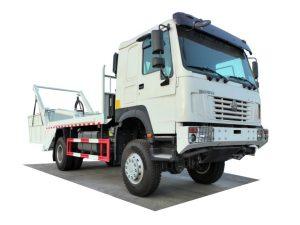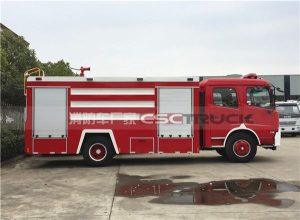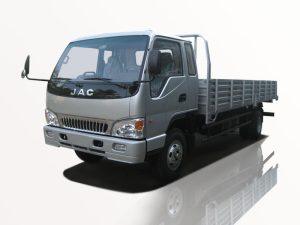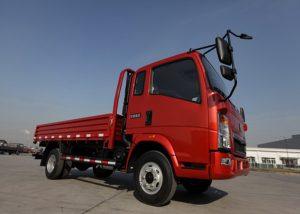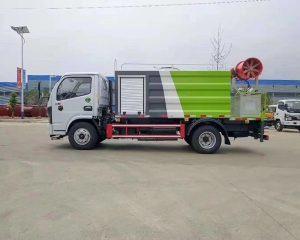Monday to Saturday - 8:00 -17:30
Understanding Reefer Truck Bodies: Your Complete Guide
In the world of transportation and logistics, keeping goods at optimal temperatures is crucial, especially for perishable items. Reefer trucks, equipped with specialized truck bodies designed for temperature control, play a vital role in this industry. This comprehensive article will delve deep into what reefer truck bodies are, their components, advantages, applications, and maintenance tips, along with practical examples and a FAQ section to address common queries.
What is a Reefer Truck Body?
A reefer truck body is a specialized vehicle body designed to transport temperature-sensitive goods. The term “reefer” is derived from “refrigerated.” These trucks are essential for moving products such as pharmaceuticals, fresh produce, dairy, and frozen foods, maintaining a consistent temperature throughout the journey.
Key Features of Reefer Truck Bodies
- Insulated Walls: The walls of a reefer truck body are insulated to prevent heat transfer.
- Refrigeration Unit: This is the heart of the reefer, responsible for cooling or freezing goods.
- Temperature Monitoring: Many modern units include digital temperature monitoring systems.
- Durability: Made to withstand harsh conditions, these truck bodies often use materials resistant to corrosion and wear.
Types of Reefer Truck Bodies
Reefer truck bodies come in various types to accommodate different needs. Understanding these can help businesses choose the right option.
1. Box Refrigerated Trucks
These trucks have a fully enclosed cargo area and are often used for local deliveries of perishable goods. The insulated box maintains the temperature, and the refrigeration unit ensures the goods remain fresh.
2. Refrigerated Trailers
Commonly seen on highways, refrigerated trailers are attached to semi-trucks and are ideal for long-haul transportation. They provide extensive space for large quantities of goods.
3. Straight Trucks
This option is simpler and combines the cab and cargo area in a single unit. Straight trucks are often used for urban deliveries where size and maneuverability matter.
4. Walk-in Refrigerated Vans
These are typically smaller, providing easy access for loading and unloading. They are ideal for catering businesses and small-scale deliveries.
Advantages of Reefer Truck Bodies
Choosing a reefer truck body has numerous benefits that can contribute to efficient logistics and supply chain management.
1. Maintaining Product Quality
By keeping products at precise temperatures, businesses can maintain the quality and shelf life of their products, reducing spoilage and waste.
2. Regulatory Compliance
Many industries have strict regulations regarding the transportation of food and pharmaceuticals. Reefer trucks help businesses comply with these regulations.
3. Versatility
Reefer trucks can transport a wide variety of products, making them ideal for businesses in different sectors. From seafood to flowers, the options are vast.
4. Cost Efficiency
Although the initial investment in reefer trucks can be high, the reduction in spoilage and waste ultimately leads to better profitability.
Components of a Reefer Truck Body
Understanding the components of a reefer truck body can provide insight into how they function effectively.
1. Insulation
The insulation material, often Polyurethane or Polystyrene, plays a crucial role in maintaining the interior temperature by minimizing heat transfer.
2. Refrigeration Unit
The refrigeration unit can be diesel-powered or electric and is responsible for cooling the inside of the truck. It includes compressors, condensers, and evaporators.
3. Flooring
Reefer truck flooring is designed to withstand heavy loads and maintain hygiene standards. Non-slip and easy-to-clean surfaces are common in these vehicles.
4. Doors
Reefer trucks feature insulated roll-up doors or swing doors designed to offer easy access while minimizing temperature loss.
Choosing the Right Reefer Truck Body
Selecting the appropriate reefer truck body is crucial for any business. Here are some factors to consider:
1. Type of Goods
Consider the items you plan to transport. Different products have varying temperature requirements and handling needs.
2. Temperature Range
Identify the specific temperature ranges you need to maintain. Some reefer trucks can provide specific freezing or chilling capabilities.
3. Size and Capacity
Based on your transportation needs, evaluate the size, payload capacity, and space needed for your products.
4. Regulatory Needs
Ensure the reefer body complies with local regulations concerning food or pharmaceutical transportation.
Maintenance Tips for Reefer Truck Bodies
1. Regular Inspection
Conduct regular inspections of the refrigeration unit, insulation, and overall body condition to identify any issues early on.
2. Refrigeration System Maintenance
Keep the refrigeration system serviced according to the manufacturer’s guidelines. Clean or replace filters frequently.
3. Temperature Monitoring
Utilize digital temperature monitoring systems to constantly check the interior temperature and ensure it remains within desired limits.
Cost Considerations for Reefer Truck Bodies
Investing in a reefer truck body entails various costs. Understanding these can aid in making a well-informed financial decision.
1. Purchase Cost
The initial cost of reefer trucks can vary based on size, type, and features. Typically, box trucks are less expensive than refrigerated trailers.
2. Operating Costs
Consider the fuel consumption, especially for diesel-powered refrigeration units, as they can significantly impact operational expenses.
3. Maintenance Costs
Regular servicing can add to long-term costs. Factor in expenses for parts, labor, and inspections in your budget.
4. Insurance Costs
Reefer trucks generally incur higher insurance premiums due to the nature of the goods transported. It’s essential to consider this in your financial planning.
Practical Examples of Reefer Truck Bodies in Action
To illustrate the importance of reefer trucks, consider these examples of their real-world applications:
1. Food Distribution
Many businesses, from local grocery stores to national supermarkets, rely heavily on reefer trucks to maintain the freshness of their produce throughout the supply chain.
2. Pharmaceutical Delivery
Pharmaceutical companies use reefer trucks to transport temperature-sensitive medications, ensuring they remain effective and safe for consumption.
3. Ice Cream Distribution
Ice cream distributors depend on reefer trucks to keep their products frozen during long-distance deliveries to maintain texture and taste.
| Application | Ideal Reefer Type |
|---|---|
| Food Distribution | Box Refrigerated Trucks |
| Pharmaceutical Delivery | Refrigerated Trailers |
| Ice Cream Distribution | Straight Trucks |
Frequently Asked Questions (FAQ)
1. What temperature range do reefer trucks maintain?
Reefer trucks can maintain temperature ranges from just above freezing (32°F or 0°C) to well below freezing (up to -20°F or -29°C) depending on the goods being transported.
2. How long can a reefer truck maintain temperature?
Reefer trucks can maintain the required internal temperature for extended periods, generally up to a few hours after being turned off, depending on insulation quality and load.
3. Can I use a regular truck for refrigerated transport?
Regular trucks lack the necessary insulation and refrigeration units, making them unsuitable for transporting temperature-sensitive goods.
4. What maintenance does a reefer truck require?
Reefer trucks require regular inspection of the refrigeration unit, maintenance of insulation and seals, and monitoring of temperature control systems to ensure efficiency.
5. Are reefer trucks environmentally friendly?
While older models may have higher emissions, many modern reefer trucks are designed to be more fuel-efficient and environmentally friendly, using advanced refrigeration technology.



